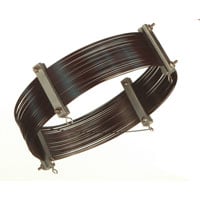
The European Space Agency announced the dramatic end to an even more amazing space mission. On September 30th the Rosetta spacecraft made a controlled landing (read crash) into the surface of the comet 67P/Churyumov-Gerasimenko. Let's just call it the SilcoComet for the purpose of our blog post. (Who names these things anyway?)
What does this have to do with SilcoTek? Well old SilcoComet up there has our coating on board! You see way back in November of 2014 The European Space Agency (ESA) successfully flew the Rosetta craft 6.4 billion kilometers and landed their Rosetta Philae craft on the surface of comet 67P/Churyumov-Gerasimenko for in-situ analysis of the comet. Why is all this important? Well the purpose of the mission was to gain an understanding of the formation of the solar system and the origin of life on earth. Lofty goals indeed! The mission required the utmost reliable instrumentation in order to endure the incredible stress of a space launch and landing on SilcoComet.
In order to precisely measure the comet's chemical composition, ESA needed an inert flowpath surface capable of withstanding the hostile environment of space. They chose SilcoNert® 1000 (Silcosteel®) for the job!

Robert Sternberg, leader of the space gas chromatography team at Laboratoire Interuniversitaire des Systèmes Atmosphériques (LISA) of the University of Paris XII noted:
” I would like to mention that all the columns selected for space mission are Silcosteel®-treated metallic capillary columns, and they have all been submitted successfully to space qualification tests such as vibration, radiation, and thermal cycles1, which demonstrated their robustness for space application."

SilcoTek® customer Restek Corporation developed space capable chromatography columns featuring SilcoTek's Silcosteel® (now known as SilcoNert® 1000) coating. SilcoNert offers unparalleled inertness and durability, allowing the development of inert chromatography columns for space sampling. Rosetta's lander, Philae, deploys 10 instruments to the comet surface, SilcoTek® coatings assure those instruments make precise measurement of compounds even in space!*
LISA went on to note:
"LISA is very grateful to Restek for being this ideal partner without the help of which the study and development of chromatographic columns for space use could not have been possible"
If you're interested in taking a look inside the incredible instrumentation needed to sample a comet, read the fascinating paper detailing how the instrument works.
Sadly All good Things Must Come To An End
Alas, the mission has now ended. The vastness of space has taken our little comet far away from usable light sources, so the sun's energy can no longer power the craft. In order to get the most data from the mission, the craft will be crashed into the surface of SilcoComet.
NASA and ESA stated:
"The final hours of descent will enable Rosetta to make many once-in-a-lifetime measurements, including analyzing gas and dust closer to the surface than ever possible before, and taking very high-resolution images of the comet nucleus. The images will include views of the open pits of the Ma'at region, where the spacecraft is expected to make its controlled impact. Ma'at is home to several active pits more than 330 feet (100 meters) in diameter and 160 to 200 feet (50 to 60 meters) deep."
Amazingly, before making impact, the Rosetta orbiter found its lander, Philae, and took a spectacular photo of Philae on the comet surface (right).
If you're ever in the neighborhood, you can stop by SilcoComet any time and see our coatings in space! If you stop by, don't forget to bring cookies.
No cookies? Sorry you'll just have to be content with exploring our newsletter.

Follow the accomplishments of the Rosetta craft on Twitter at @ESA_Rosetta or visit their website athttp://blogs.esa.int/rosetta/
- 1C. Szopa, U.J. Meierhenrich, D. Coscia, L. Janin, F. Goesmann, R. Sternberg, J.-F. Brun, G. Israel, M. Cabane, R. Roll, F. Raulin, W. Thiemann and C. Vidal-Madjar and H. Rosenbauer J. Chromatogr. A, 982 303-312 (2002)
- *Photos courtesy of ESA; copyright ESA.







